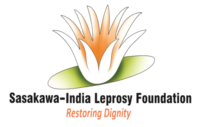The year 2005 was a glorious moment in India’s fight against Leprosy. India achieved a prevalence of less than 1 case per 10,000 population – the benchmark set by WHO for a country to achieve elimination of Leprosy as a public health problem. Indeed, it was no mean achievement to bring down the prevalence from around 50 per 10,000 population at the time of Independence to less than one.
It was during this time that Mr Yohei Sasakawa of Japan (WHO Goodwill Ambassador for Leprosy Elimination and Chairman- The Nippon Foundation) realised that the mission of elimination of Leprosy would be rendered futile and incomplete unless stigma against people affected by leprosy is eradicated and they have reintegrated into the society. From his innumerable travels to leprosy colonies spread across India, he found that the fight against social stigma and discrimination would have to be led by people affected by Leprosy.
According to him, the fight against Leprosy is like the two wheels of a motorcycle- the front wheel is the medical treatment and care and the back wheel is that of social and economic rehabilitation of people affected by Leprosy.
Having supported the front wheel for decades, Mr Sasakawa took two visionary steps. One, facilitating the setting up of the National Forum of Leprosy Affected People (now renamed Association of People Affected by Leprosy) – an association of people affected by Leprosy, living in colonies across the country; and two, setting up of a foundation to facilitate the economic empowerment of people affected by Leprosy so that they could begin to earn their livelihood with dignity. Sasakawa-India Leprosy Foundation as this organisation is called came into being on 21st November 2006.

